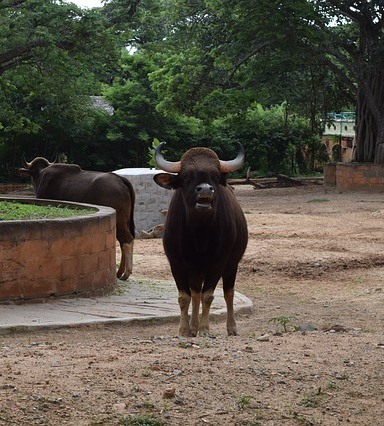
How Do Haat's Animal Cremators / Animal Incinerators Help with Dead Birds, Pets and Wild Animals?
In pre-Independence India, when the British and princely states ruled the sub-continent, there were hardly any wildlife laws. At that time, only one family or one hunter could hunt. Because of this selfish motive—preserving wildlife for their hunting pastimes—the population of many exotic animals dwindled to the point of extinction. Today thankfully, realization of the damage done and public interest has led to attention being centred around mega species—like the tiger, the rhinos and the elephants.
At present India is home and sanctuary to many wildlife animals, some of these parks are given below:
• Kaziranga National Park, Assam: A World Heritage Site, the park hosts two-thirds of the world's Great One-horned Rhinoceroses.
• Ranthambore National Park, Rajasthan: Apart from the Royal Bengal Tiger, this is home to animals like Leopards, Wild Boars, Peacocks, Chitals, Sambhars, Hyenas, and Sloth Bears.
• Kanha National Park, Madhya Pradesh: This Park is the inspiration behind Rudyard Kipling's beautiful novel The Jungle Book. The park has a significant population of Bengal Tigers, Panthers, Sloths, Hyenas, Peacocks, Mongoose, Jungle Fowls and Langurs.
• Jim Corbett National Park, Uttarakhand: Situated in the foothills of the Himalayas, the most talked about of Corbett's denizens are the Bengal Tiger and the Asiatic Elephant.
• Periyar Wildlife Sanctuary, Kerala: Periyar is a highly protected tiger and elephant reserve.
• Bandhavgarh National Park, Madhya Pradesh: Nestled among the Vindhyas, Bandhavgarh was used by the Maharajas of yester-years as a hunting park. Today, it is a highly protected area and boasts of the highest density of tigers in the country.
• Hemis National Park, Jammu & Kashmir: Hemis has the distinction of being the only national park north of the Himalayas and is home to a healthy population of about 200 majestic Snow Leopards.
• Gir National Park and Wildlife Sanctuary, Gujarat: Gir is the only place in the world where you can find the Asian Lion in its natural habitat. Gir is a highly protected reserve, as efforts are ongoing to save the Asiatic Lion, only 411 of which remain.
• Sundarbans National Park, West Bengal: The largest tidal mangrove forest in the world, the Sundarbans lies in the delta of the Bay of Bengal between India and Bangladesh. The Sundarbans is home to the famous Royal Bengal Tiger (about 500 of them).
Everyone is happy to see the growth in numbers of these protected species, thanks to the initiative of the government. There are other places such as zoological parks which also house a variety of wild animals, but not in so many numbers.
Dead animals are taken care of in the wild by a natural process of the dead becoming the food for the living. The other process of eliminating the weaker animals by the stronger ones follows nature`s predator and prey route. There is, thus, no problem in disposing of the dead.
However, what happens in a zoological park? Many parks in today`s India are provided with incinerators for the proper disposal of the carcass. Haat has supplied quite a few, one of the larger ones being Model ACR PD-72 with a capacity of 250 kg/h (burning rate) with a maximum weight acceptance of 350 kg at oen go installed in Western India. This system has many features to its credit, such as
• Jib crane for loading
• Automatic electrically operated charging door
• Simultaneous burning of the solid carcass and fat with primary and secondary hearths with a unique design
• Lined with combination of bricks and castables
• Ruggedly built to last at least 15 to 20 years.
• Fully automatic operation with PLC and HMI
There are other incinerator installations for animal houses, poultries and hatcheries with Haat models PWR and ADR in use all over the world. These are used to dispose of dead birds, pets, animals from poultries, hatcheries and animal husbandry establishmennts, testing houses, etc.
These models incorporate certain unique features:
• Skid-mounted and portable
• No special installation work involved
• Fit and fire type incinerators
• Optional air pollution control systems
• Long refractory life
• Proven design with performance working in major establishments


